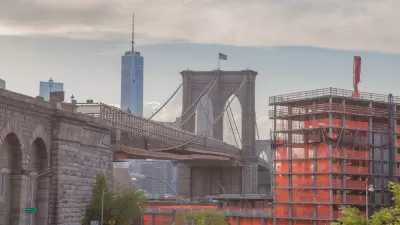Richard Florida warns about America's increasing “economic Balkanization”: a shrinking working class and the attendant swelling of low-wage service sector employees and the unemployed on the one hand, and the prosperous creative class on the other.
"Income and wealth inequality have risen to record levels in the United States." writes Richard Florida. "Even as cities have become the new social and economic organizing units of our increasingly spiky world [PDF], their inequalities are approaching levels found in Third World nations."
According to Florida's math, one-third or 40 million of the country's work force is composed of a powerful creative class, "[w]ith average annual earnings of more than $70,000," and controlling "some 70 percent of the nation's discretionary income." In contrast, the growing low-wage service sector employees working in food preparation, personal care, and retail sales earn just over $30,000 annually. This group of 60 million becomes "the other two-thirds" when the unemployed are taken into account.
"If the top third of America's workers are navigating and prospering in the knowledge economy," warns Florida, "the other two-thirds are disconnected and sinking. And if things continue to go in the direction that they have been, their children and their grandchildren will be too."
Florida writes, "America once had a dream. For almost two-thirds of us, that dream is either dead or dying." He urges politicians, including presidential candidates Obama and Romney, to take heed, and says the nation is in "desperate need" of a "new social compact" for its service workers, that enhances their pay, livelihoods and quality of life.
FULL STORY: The 66%: America's Growing Underclass

Planetizen Federal Action Tracker
A weekly monitor of how Trump’s orders and actions are impacting planners and planning in America.

Restaurant Patios Were a Pandemic Win — Why Were They so Hard to Keep?
Social distancing requirements and changes in travel patterns prompted cities to pilot new uses for street and sidewalk space. Then it got complicated.

Map: Where Senate Republicans Want to Sell Your Public Lands
For public land advocates, the Senate Republicans’ proposal to sell millions of acres of public land in the West is “the biggest fight of their careers.”

Orange County, Florida Adopts Largest US “Sprawl Repair” Code
The ‘Orange Code’ seeks to rectify decades of sprawl-inducing, car-oriented development.

Maui's Vacation Rental Debate Turns Ugly
Verbal attacks, misinformation campaigns and fistfights plague a high-stakes debate to convert thousands of vacation rentals into long-term housing.

San Francisco Suspends Traffic Calming Amidst Record Deaths
Citing “a challenging fiscal landscape,” the city will cease the program on the heels of 42 traffic deaths, including 24 pedestrians.
Urban Design for Planners 1: Software Tools
This six-course series explores essential urban design concepts using open source software and equips planners with the tools they need to participate fully in the urban design process.
Planning for Universal Design
Learn the tools for implementing Universal Design in planning regulations.
Heyer Gruel & Associates PA
JM Goldson LLC
Custer County Colorado
City of Camden Redevelopment Agency
City of Astoria
Transportation Research & Education Center (TREC) at Portland State University
Camden Redevelopment Agency
City of Claremont
Municipality of Princeton (NJ)



























